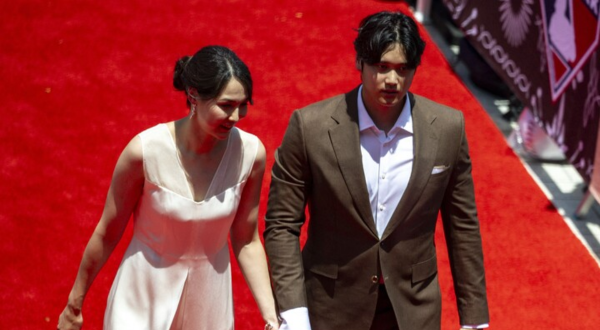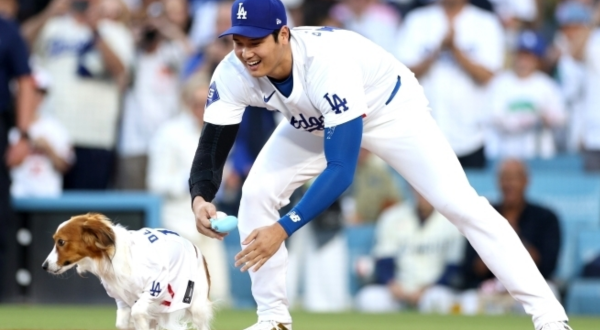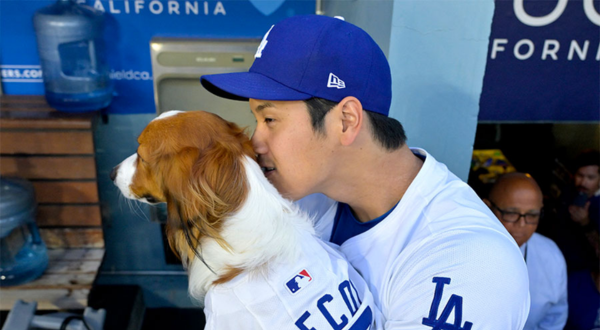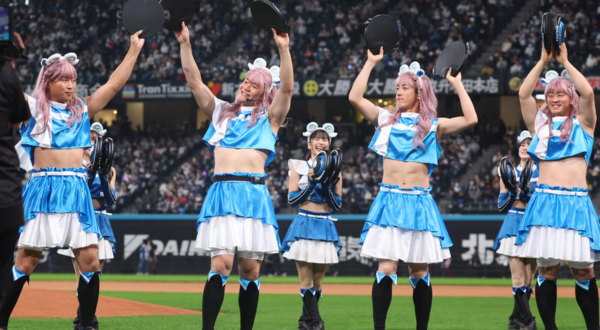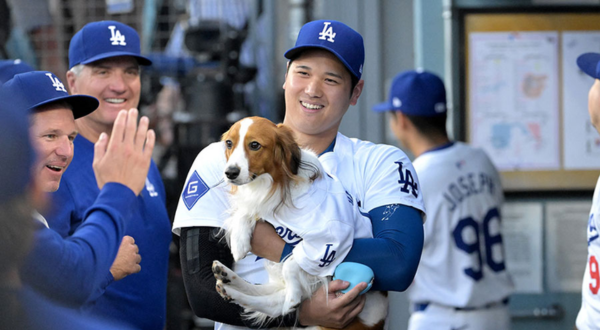
The Dallas Cowboys are in a pickle with Dak Prescott. They are either going to A) Pay him an astronomical sum of money to be a very, very good — but probably not elite — NFL quarterback; or B) Let him walk, save all that money but wander deep into the quarterback wilderness.
There’s no easy choice here, and a major reason why is that the NFL quarterback market is broken. The easiest way to know: In a sensible economy, the best player on the best team would make the most money. So, this should be simple.
The Kansas City Chiefs are the best team in the NFL. They also employ the world’s best quarterback in Patrick Mahomes. It would seem fairly obvious then that Mahomes should be the highest-paid player in football. And yet after Miami Dolphins quarterback Tua Tagovailoa and Green Bay Packers QB Jordan Love signed their megadeals recently, Mahomes ranks 11th in average annual salary at $45 million.
Advertisement
This is a problem.
Not for Mahomes, who doesn’t have an issue with his compensation, and certainly not for the Chiefs, but for the rest of the NFL and, in particular, the teams paying their lesser-talented quarterbacks more money than Mahomes — or are preparing to (ahem, Cowboys).

GO DEEPER
Dak Prescott talks CeeDee Lamb, his situation
These teams are willfully, though understandably, putting themselves at a distinct competitive disadvantage. By paying their veteran QBs more money — and giving them a bigger slice of the salary cap pie — than the best player in the world, they are burdening themselves with the task of building rosters around their QBs that are good enough to bridge the gap between their QB and Mahomes — and doing it with less money.
That’s somewhat of an oversimplification of the situation but is largely the bet these teams are placing when they overpay their less-talented QBs. It’s not a great bet, and yet it’s completely understandable. Not paying these quarterbacks and choosing to enter QB purgatory with no guarantee of escape is terrifying. These front offices have livelihoods to protect, so choosing to move on from a quality quarterback in a QB-driven league is an extraordinarily difficult choice to make.
This brings us back to Dallas, where the QB is uniquely positioned to leverage the Cowboys into paying him an ungodly amount of money.
Should they do it?

GO DEEPER
Getting to the core of why NFL players love Pilates
First, we need to establish that Prescott is a decidedly upper-tier QB. You don’t luck your way into what he accomplished in 2023 — an All-Pro season and MVP runner-up — but he also doesn’t live in the same difference-maker stratosphere as Mahomes.
Still, he possesses an enormous amount of leverage in that he is coming off the best season of his career, just turned 31 years old, is playing in the final year of his contract and the Cowboys can’t use the franchise tag on him, which means that short of signing a new deal in the next eight months, he’s going to hit free agency. And Prescott knows that if he reaches the open market, QB-needy teams will fall over themselves to pay him $60 million-plus per year. So, that’s likely to be the price for Dallas.
But can the Cowboys afford to allow a QB of Prescott’s caliber to take up that much cap space and still compete?
It would be tough.
I looked back at the cap hits of the quarterbacks on teams that reached the last 10 conference title games. Of those 40 teams, only five rostered quarterbacks with salaries taking up more than 15% of the cap.
QuarterbackTeamSeason% of cap Patrick MahomesChiefs202216.5
Patrick MahomesChiefs202216.5 Patrick MahomesChiefs202317.2
Patrick MahomesChiefs202317.2 Aaron RodgersPackers201915.6
Aaron RodgersPackers201915.6 Ben RoethlisbergerSteelers201615.4
Ben RoethlisbergerSteelers201615.4 Matt RyanFalcons201615.3
Matt RyanFalcons201615.3
Only Mahomes’ Chiefs won Super Bowls.
If we stopped our analysis here, we could conclude Mahomes is the exception to the rule and that you cannot win a championship while paying your QB — unless he is Mahomes — more than 15% of the cap. That would seem to indicate the Cowboys probably shouldn’t pay Prescott and that teams like the Dolphins and Packers have erred in paying their QBs.
But let’s go another step further. Of those 40 teams, only 19 played in a conference championship game with a quarterback making more than 10% of the cap (the rookie QB contract is a powerful thing). Five of those 19 were either Tom Brady or Mahomes. As for teams that have won a Super Bowl with a quarterback taking up more than 10% of the cap, the list is:
QuarterbackTeamSeason% of cap Tom BradyPatriots201812.1
Tom BradyPatriots201812.1 Tom BradyBuccaneers202012.6
Tom BradyBuccaneers202012.6 Matthew StaffordRams202111.0
Matthew StaffordRams202111.0 Patrick MahomesChiefs202216.5
Patrick MahomesChiefs202216.5 Patrick MahomesChiefs202317.2
Patrick MahomesChiefs202317.2
That’s four years in a row, so it may be fair to conclude teams can get away with 10%. However, with three of those titles being won by teams led by two of the best to ever do it in Mahomes and Brady, it’s hard to know for sure.
Even with the cap rapidly rising — Over The Cap and Spotrac both project the salary cap, currently at $255.4 million, to exceed $300 million by 2027 — Prescott’s $60 million-plus salary is primed to gobble up a big chunk of that.
Of course, the Cowboys can (and probably would) try to mimic teams like the Philadelphia Eagles, Cleveland Browns and New Orleans Saints, tack void years onto the end of Prescott’s contract and push a lot of the money owed to him well into the future.
For those unfamiliar with this strategy, the Eagles signed QB Jalen Hurts to a five-year, $255 million extension last year. However, there are seven void years on the deal that keep his cap hit under 15% percent through 2027. Now, his 2029 projected cap hit exceeds $97 million, but he will likely never play on that figure, as the Eagles will likely reconfigure his contract and keep pushing money into the future so it’s easier to build a talented roster around him. In the Cowboys’ case, this would allow them to re-sign the likes of superstar receiver CeeDee Lamb and superstar pass rush Micah Parsons, among others, while also paying Prescott.
There are downsides to void years — it can create a lot of dead money in the future and/or force teams into handing out extensions to older/average players just to make ends meet.
Playing the game like this carries plenty of risk. Is Prescott the type of QB worth taking that kind of risk on? So far in his career, despite all his regular-season success, the lack of postseason success makes it tricky.
Prescott’s problems vs. playoff teamsStat2022-23 ranks2022-23 vs. playoff teams ranksTD/INT12th18thPasser Rating5th6thSacks + INTs%13th24thEPA vs. Blitz9th18thEPA/Dropback6th7th
Prescott had an issue performing at a top-10 level against 2023 playoff teams. And that fits the bill for Prescott’s career. Overall, he’s a good QB who will win plenty of regular-season games but hasn’t performed at that same level against the league’s best, which is what you tend to see in the playoffs.
Remember, Dallas hasn’t been to an NFC Championship Game since 1995, meaning that on both Prescott’s rookie contract and the four-year, $160 million deal he’s currently playing on, he hasn’t taken the Cowboys where they want to go.
So why should the Cowboys expect that to change with Prescott eating up an even greater percentage of the cap? Building a Super Bowl-caliber roster around him would be an immense challenge, even for a team that drafts as well as Dallas does.
 While the team’s failures aren’t all on him, Dak Prescott hasn’t been able to guide the Cowboys beyond the NFC divisional round during his eight seasons as their starting QB. (Ryan Kang / Getty Images)Conclusion
While the team’s failures aren’t all on him, Dak Prescott hasn’t been able to guide the Cowboys beyond the NFC divisional round during his eight seasons as their starting QB. (Ryan Kang / Getty Images)Conclusion
There’s no easy answer here. The soundest strategy is probably for the Cowboys to cap their offer at $60 million per year, and if Prescott wants to wait for free agency and another team goes above that, let him go. Sure, it’s easy to say from afar that the Cowboys should let their MVP-caliber QB walk out the door, but the Cowboys might be uniquely positioned to do what few other teams can.
There’s no GM under pressure in Dallas. It’s Jerry and Stephen Jones, and they aren’t going anywhere. If they want to let Prescott leave, no one is going to fire them for making a mistake (if that’s what it turns out to be).
Let’s say they do that. What would be their path forward then?
Sam Darnold, Jacoby Brissett and Justin Fields are likely to be the top free agents available next offseason. Brissett stands out in my NFL Projection Model as the most efficient of the three, and though the drop-off from Prescott to Brissett is significant (my model suggests Dallas would be 2.5-3.0 wins worse this year with that change at QB), my model can’t predict how much better the roster could get with Dallas redistributing the money it would have paid Prescott.
Think about it: The Cowboys could easily re-sign Lamb and Parsons without worrying about the costs. They could then use the savings to go after another wide receiver (Tee Higgins or Chris Godwin?) to make life easier for your bridge (and later rookie) quarterback. That may not mitigate the loss of Prescott, but it would be a good start.
By definition, a bridge starter isn’t a long-term solution, so Dallas would likely draft a rookie to pair with its bridge QB. That could be a tough assignment given that Dallas isn’t likely to be picking in the top 20. There’s always the possibility of a trade up in the 2025 NFL Draft. Or maybe Dallas waits a year and continues building out its roster to make it a better landing spot for a rookie in 2026.
While neither option is exciting, the question comes down to what brings you closer to returning to the Super Bowl: Prescott with a less-talented roster and/or possible cap issues down the road? Or is it best to reset with a bridge quarterback/rookie?
